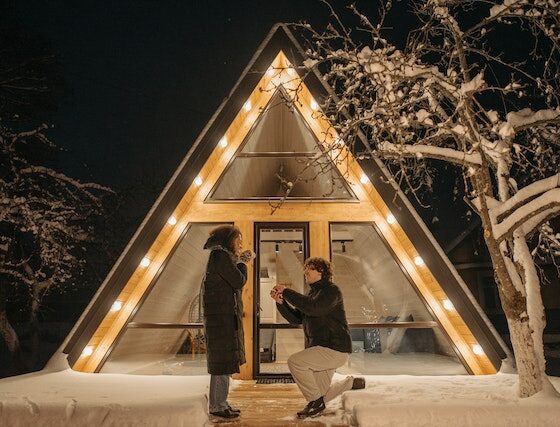5 Pacific Northwest Trees to Plant for Winter Color
“The glory of gardening: hands in the dirt, head in the sun, heart with nature. To nurture a garden is to feed not just the body, but the soul.” — Alfred Austin
Winter is often thought of as a dark and dull time, but it doesn’t have to be. You can change this misconception by planting colorful trees in your garden. That’s right, not all trees lose their color or leaves in the winter. There are several Pacific Northwest trees that will add beauty and vibrancy to your garden, even during the coldest months of the year.
Furthermore, many of these trees will add comforting smells to your yard too. This won’t only add aesthetic to your property but to your neighborhood as a whole. Plus, trees can add to the value of your home.
The five trees below are all Pacific Northwest trees that you can plant in your garden that are sure to give you that winter color you’re looking for.
? Hamamelis Trees
Hamamelis is the scientific name of the trees more commonly known as witch hazel or winterbloom trees. You may have heard of witch hazel, as it’s used in some medicine. You might even have a bottle in your medicine cabinet.
These are small, deciduous trees that grow anywhere from 15 to 20 feet in height. There are two native species of these trees—Hamamelis virginiana, which is American witch hazel, and Hamamelis vernalis, which is Ozark witch hazel.
Witch hazel are much-loved trees for winter color, as they have clusters of yellow branches that will bloom during the fall season and last all the way through winter. And these flowers will fill your yard with their lovely fragrance.
The scent and vibrant yellow color are especially found in the Hamamelis mollis species, which is from Asia and more commonly known as the Chinese witch hazel. All species of these trees should be planted in full or filtered sunlight.
? Winter Camellia
The Camellia sasanqua is more commonly known as the winter camellia. This is a small flowering evergreen tree or shrub. This tree begins to bloom at the beginning of fall and will add color to your garden throughout the winter.
The flowers of the winter camellia are large and fluffy. They come in pink, red, yellow, orange, and white. As you can imagine, these colors will definitely stand out in your winter yard.
These trees grow well in hardiness zones of 7 to 9, and the Pacific Northwest coast is zone 8. They should be planted in rich soil.
? Winter Daphne
The winter daphne, as the name suggests, also flowers in the winter. The scientific name is Daphne odora. This is an evergreen shrub that will not only add color to your garden but add a beautiful, strong scent as well.
These trees have light pink flowers that bloom during the winter. The flowers will then last through early spring. Winter daphne trees should be planted in areas where there is partial sun. They should also be in an area with soil that drains well.
? Oso Berry
If you’re looking for a tree that produces flowers a bit later in the winter, the Oemleria cerasiformis, better known as the oso berry or Indian plum, is for you. These shrubs only reach about 12 to 18 feet tall.
The white flowers bloom in late winter and continue to leaf out during early spring. Once they’re established, oso berry trees don’t require any supplemental watering.
These small trees also produce fruit, making them perfect if you’re trying to attract local wildlife to your garden. Planting both a male and female tree of this species is a good idea if you want the trees to produce ample berries.
? Red Osier Dogwood
The Cornus sericea, better known as the red osier dogwood, is a great Pacific Northwest tree for your garden. The dogwood is a species of tree that’s one of our favorites at Mr. Tree. It’s a relative of the flowering dogwood, and as you can imagine, it also blooms in great colors. In addition to this, its stems are often bright red, so it’s an excellent pop of color even before it flowers. The red osier dogwood has open clusters of small white flowers, which look beautiful on its distinctive red branches.
If you want this tree to fully thrive, it should be planted in a sunny spot with moist soil. However, it will survive in both sun and shade. It can also produce berries, making it another good choice if you want to attract wildlife to your yard.
“Love the trees until their leaves fall off, then encourage them to try again next year.”
Planting trees that add winter color to your garden is a great idea. It will add a beautiful contrast to the dull winter colors and often a wonderful fragrance to the air. It will also remind you spring is coming and the warmer weather will return eventually. And the local wildlife will love the food source.
Of course, you can plant any of these trees on your own. However, if you’d like some assistance, please give us a call. We’re happy to come by and help you find the perfect location for your new tree, or even do the work for you.
Additionally, if you’re not sure which of the above trees will work best on your specific property, we can take a look at your yard and provide you with a recommendation.
If you want to look out into your garden on a cold winter day and see some color, these are the trees you should be looking to plant. We want you to have the garden you’ve always dreamed of and that you deserve, no matter what the season. Just because winter comes doesn’t mean your garden needs to lose its beauty or lovely scent. If you choose to plant any of the above-mentioned trees, you can be sure that won’t happen. You’ll have beauty in your garden for all four seasons!








